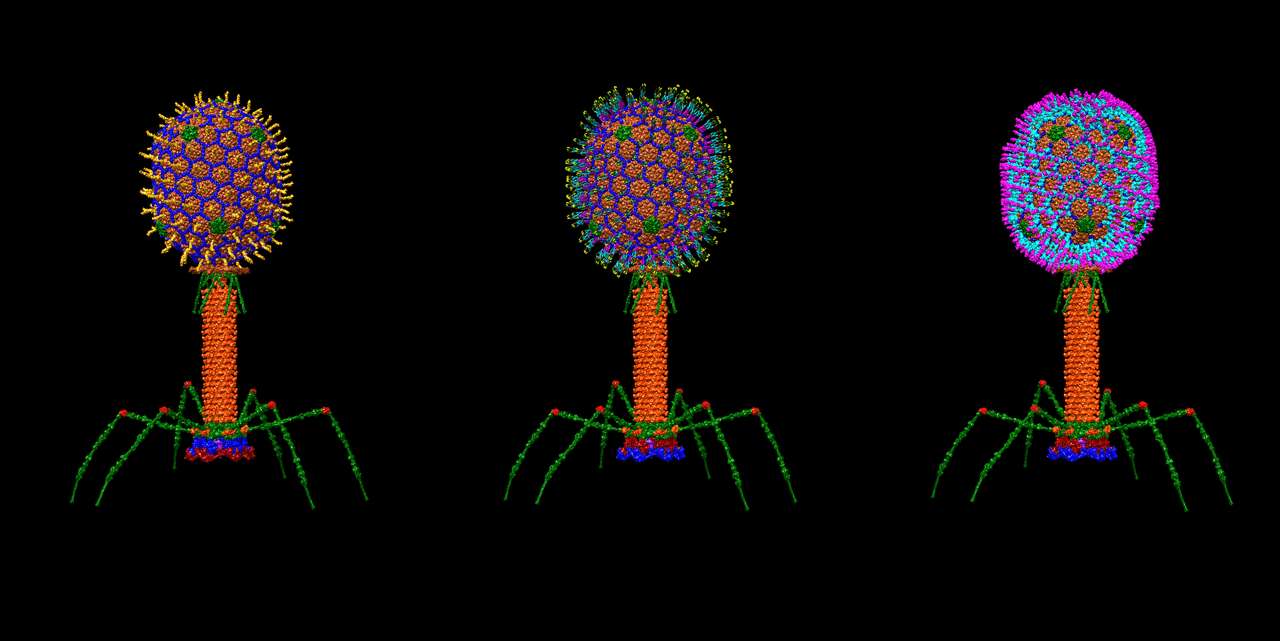
We have all heard of a virus and had some type of virus in our lifetime, but what exactly is it? A virus attacks when the host’s immune system is weakened. There are multiple symptoms of a virus but overall a virus is accompanied by headaches, fevers, and body aches.Â
Table of Contents
Breakdown Of A VirusÂ
A virus is a thousand times smaller than bacteria. It is so small that a microscope can not observe it. A virus is not alive but becomes “alive†and out of its dormant state when they insert themselves into living tissues. This is how they are able to reproduce. The key factor setting a virus apart from bacteria is that a virus has either DNA or RNA, but not both. This is the reason they are unable to grow if not attached to another living tissue. However, bacterias are able to eat, grow, and reproduce all on their own.Â
Once inside a cell, the virus quickly takes over and begins to make copies of itself and new viral proteins. Eventually, the virus breaks free by bursting out of the host cell and going to infect other cells, spreading itself when the immune system is not as strong. Using this method of attack, a virus can spread quickly throughout the body.Â
Example Of A Virus
Herpes-1 Virus is the virus responsible for cold sores. This virus is usually contracted during adolescence and given to a child from a family member by a social kiss. Since many are infected during childhood, by the time they are adults they no longer see it as a medical issue.Â
Epstein-Barr virus (EBV) virus is also a member of the herpes family and most people are infected with EBV during some point in their lives. In order to contract EBV, intimate contact through the salvia of an infected person is required. When infected, the commonly associated symptoms are fever, sore throat, swollen lymph glands, and fatigue.Â
TreatmentÂ
The removal of a virus is extremely difficult. There are prescription medications to help relieve symptoms but no medication has been 100% effective. However, there is a natural agent with studies performed that show effective treatment. Monolaurin is an anti-viral agent that is found naturally in breast-milk. This agent can also be found in amniotic fluid, heavy cream, and coconut oil. The power behind monolaurin is its ability to dissolve the protective membrane of the virus and destroy the main defense a virus has. Monolaurin also binds to a virus to inhibit the virus from attaching to a host cell.Â
Viruses are tricky because they can spread so fast! Considering that they attack most when the immune system is weak, it is important that we do everything we can to keep our immune systems strong and able to fight. This includes washing your hands frequently, avoiding touching your nose, eyes, and mouth, and eating a healthy diet full of vegetables, phytonutrients, and lean proteins to fuel the body’s cells and resist inflammation. -Kenna Vaughn, Senior Health coach Â
ReferencesÂ
Grisanti, Ronald. “Interpretation and Treatment: Viral Screening .†Functional Medicine University . 2020, www. functionalmedicineuniversity.com/members/467 .cfm .
The scope of our information is limited to chiropractic, musculoskeletal, and nervous health issues or functional medicine articles, topics, and discussions. We use functional health protocols to treat injuries or disorders of the musculoskeletal system. Our office has made a reasonable attempt to provide supportive citations and has identified the relevant research study or studies supporting our posts. We also make copies of supporting research studies available to the board and or the public upon request. To further discuss the subject matter above, please feel free to ask Dr. Alex Jimenez or contact us at 915-850-0900.Â
Disclaimers
Professional Scope of Practice *
The information herein on "Viruses: What Are They?" is not intended to replace a one-on-one relationship with a qualified health care professional or licensed physician and is not medical advice. We encourage you to make healthcare decisions based on your research and partnership with a qualified healthcare professional.
Blog Information & Scope Discussions
Welcome to El Paso's wellness blog, where Dr. Alex Jimenez, DC, FNP-C, a board-certified Family Practice Nurse Practitioner (FNP-C) and Chiropractor (DC), presents insights on how our team is dedicated to holistic healing and personalized care. Our practice aligns with evidence-based treatment protocols inspired by integrative medicine principles, similar to those found on dralexjimenez.com, focusing on restoring health naturally for patients of all ages.
Our areas of chiropractic practice include Wellness & Nutrition, Chronic Pain, Personal Injury, Auto Accident Care, Work Injuries, Back Injury, Low Back Pain, Neck Pain, Migraine Headaches, Sports Injuries, Severe Sciatica, Scoliosis, Complex Herniated Discs, Fibromyalgia, Chronic Pain, Complex Injuries, Stress Management, Functional Medicine Treatments, and in-scope care protocols.
Our information scope is limited to chiropractic, musculoskeletal, physical medicine, wellness, contributing etiological viscerosomatic disturbances within clinical presentations, associated somato-visceral reflex clinical dynamics, subluxation complexes, sensitive health issues, and functional medicine articles, topics, and discussions.
We provide and present clinical collaboration with specialists from various disciplines. Each specialist is governed by their professional scope of practice and their jurisdiction of licensure. We use functional health & wellness protocols to treat and support care for the injuries or disorders of the musculoskeletal system.
Our videos, posts, topics, subjects, and insights cover clinical matters, issues, and topics that relate to and directly or indirectly support our clinical scope of practice.*
Our office has reasonably attempted to provide supportive citations and has identified the relevant research studies or studies supporting our posts. We provide copies of supporting research studies available to regulatory boards and the public upon request.
We understand that we cover matters that require an additional explanation of how they may assist in a particular care plan or treatment protocol; therefore, to discuss the subject matter above further, please feel free to ask Dr. Alex Jimenez, DC, APRN, FNP-BC, or contact us at 915-850-0900.
We are here to help you and your family.
Blessings
Dr. Alex Jimenez DC, MSACP, APRN, FNP-BC*, CCST, IFMCP, CFMP, ATN
email: coach@elpasofunctionalmedicine.com
Licensed as a Doctor of Chiropractic (DC) in Texas & New Mexico*
Texas DC License # TX5807
New Mexico DC License # NM-DC2182
Licensed as a Registered Nurse (RN*) in Texas & Multistate
Texas RN License # 1191402
ANCC FNP-BC: Board Certified Nurse Practitioner*
Compact Status: Multi-State License: Authorized to Practice in 40 States*
Graduate with Honors: ICHS: MSN-FNP (Family Nurse Practitioner Program)
Degree Granted. Master's in Family Practice MSN Diploma (Cum Laude)
Dr. Alex Jimenez, DC, APRN, FNP-BC*, CFMP, IFMCP, ATN, CCST
My Digital Business Card






